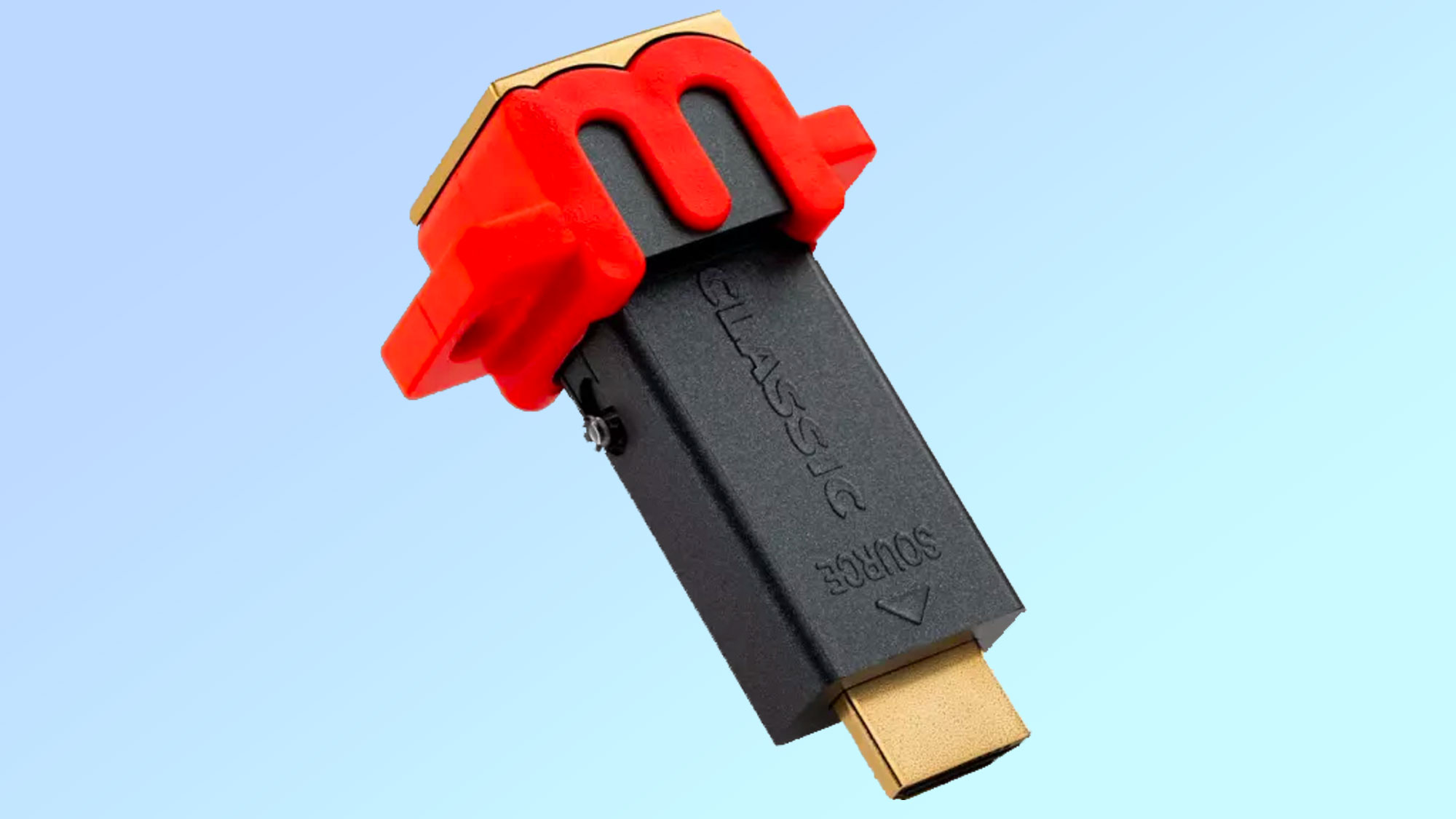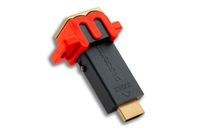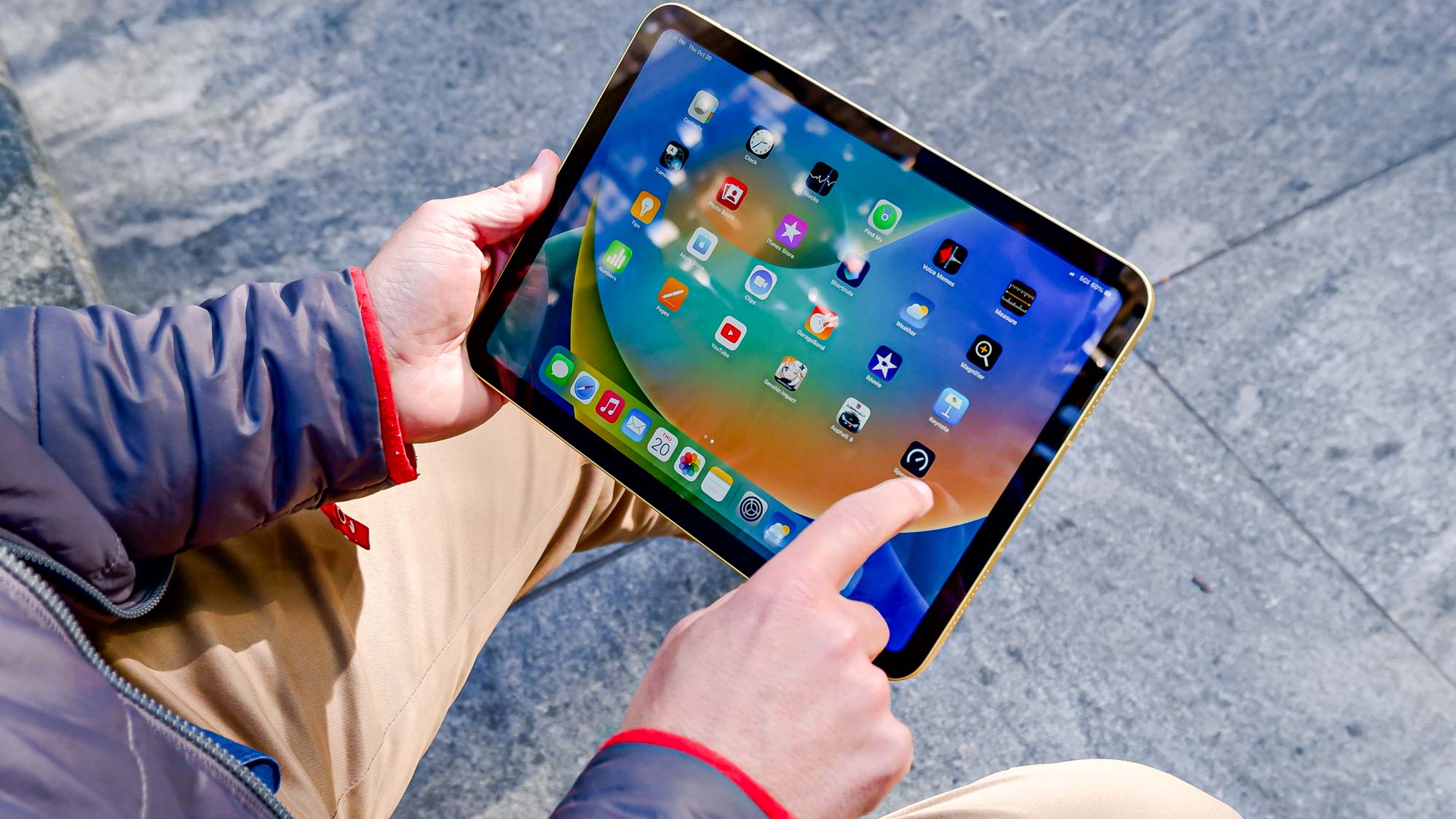
If you're looking for a gift for a Nintendo Switch gamer in your life, this could be it. And I know because I've tested it.
Metroid Dread is easily one of the best Nintendo Switch games to come out in 2021. The fast side-scrolling action coupled with its deep labyrinthine world makes for an engaging experience throughout. Unfortunately, due to the aging hardware of the Nintendo Switch, developer MercurySteam had to make some graphical cuts to ensure the game could run at a smooth 60 fps.
This meant lowering the resolution down to a measly 1600x900 when docked with zero anti-aliasing. On larger 4K televisions, this leads to blurry textures and jagged edges, not something indicative of a major 2021 release.
I personally did not experience the game this way. And no, I didn't emulate the game on PC as some others did. My gaming setup incorporates the mClassic ($99 on Best Buy), a small HDMI upscaler made by U.S.-based hardware manufacturer Marseille Inc.
Marseille mClassic: $99 at Best Buy
The Marseille MClassic Plug and Play Graphics Enhancer is designed to upscale graphics for higher resolution TVs and displays when used with the Nintendo Switch and other consoles. This add-on graphics processor can give a boost to your graphics, resulting in cleaner visuals.
The device looks like an unassuming streaming stick with a giant "m" logo sticking out the back. It connects to the back of a Nintendo Switch, or any other device with an HDMI output, and upscales outgoing video while also adding an antialiasing layer on top. In my setup, I have it at the output end of an HDMI switch so that all my retro systems can get a small graphical bump.
I had been using the mClassic for about a year on my 55" LG OLED C9 TV. It's an excellent TV, but with a 3840 x 2160 resolution, lower scale content can end up looking blurry. When playing games like Animal Crossing: New Horizons or Splatoon 2, my eyes grew tuned to the smoother edges the mClassic was helping output.
It was while I was at a friend's house that I noticed how blurry and jagged Switch games looked on a 4K display minus the mClassic. My friend also sports an LG OLED, making it an even comparison for my eyes.
Sign up to get the BEST of Tom's Guide direct to your inbox.
Get instant access to breaking news, the hottest reviews, great deals and helpful tips.
Upon seeing non-mClassic gameplay, I told him to consider getting the diminutive red and black device. But he declined, saying he didn't play the Switch often enough and that the $99 price tag wasn't worth it for such a subtle change in quality. I couldn't blame him. To heap on an extra $99 cost to a $300 gaming system is a lot. However, the mClassic is often on sale for $10 to $20 off.
Either way, the difference for me when playing Metroid Dread was significant enough to where side-by-side comparisons had to be made.
Below is a video of Switch gameplay comparing the mClassic when both on and off. The effect is most noticeable on a large 4K television, but the video should demonstrate what I mean. Be sure to zoom in and watch it in 1080p.
The start of the video shows my Nintendo Switch OLED's menu screen. Take a look at the logos for No More Heroes: Travis Strikes Again. The lettering when the mClassic is off is noticeably blurrier versus when it's on.
The next scene shows Samus Aran in her ship with the camera zooming in closer to her helmet. Here, if you look at the edges of her visor when the mClassic is off, there's a shimmering effect taking place, almost as if the pixels are dancing. This is due to the lower resolution and lack of antialiasing essentially showing the corners of each pixel. When the mClassic is on, the effect is less noticeable.
But less noticeable does not mean entirely unnoticeable. The mClassic only bumps the resolution to the next output value. This means that a 720p signal can only go up to 1080p. A 1080p signal can only go up to 1440p. The mClassic doesn't magically post-process an image from 720p to 4K. Doing so would likely require much more horsepower and special upscaling algorithms.
A later scene shows Raven Beak, the main antagonist in Metroid Dread, holding Samus by the throat. We've added an image slider below for easy comparisons. Here, if you look at the edges of Samus' calves and hips, her armor doesn't look fully round and smooth. You can also see more jagged edges around her shoulder pads and at the top of her helmet. For the best results, try zooming in on your phone or computer.
A similar effect can be seen in this scene, with Samus collapsed on the floor after her encounter with Raven Beak. Again, zoom in for best results.
Here, there's a general blurriness to Samus. Look at the areas in which blue meets with white on her armor. There's a slight smear to the image. And take a look at the orange glow from her arm cannon. When the mClassic is off, the light source looks angular, as if it were from a 3DS game.
When moving the slider below to the "on" position, there's a clear resolution bump around Samus. Colors pop a little more and there's overall greater clarity. Plus, the orange lights from her arm cannon don't smear into the rest of her weapon.
Jagged edges are especially noticeable in the slider below, where Samus is seen examining her suit after the Raven Beak encounter. Pay attention to the round areas of Samus' armor, like her shoulder pads and helmet. The silver lightning bolt-like image on her shoulder pads look noticeably sharper with the mClassic on.
And in this gameplay scene below, Samus looks blurrier with the mClassic off versus when it's on.
Hopefully the clip and image sliders above help better demonstrate what the mClassic can do for lower resolution content. When it comes to actual gaming, I noticed zero lag or latency issues. Metroid Dread, Splatoon 2 and Super Smash Bros. Ultimate feel as smooth with the mClassic off as it does with it on.
Whether the mClassic is worth the $99 (or occasional $79) price tag comes down to individual preference. I bought it for $90 earlier this year, and have noticed improvements to many classic games, such as Wii titles running on Wii U. In this case, the Wii U does its own internal upscaling of Wii games, and then the mClassic adds another upscaling layer on top. Playing the Wii game Wario Ware: Smooth Moves on Wii U with mClassic looks remarkably brighter and cleaner versus playing on a Wii alone.
For some, the price of the mClassic is too high considering the improvement to picture quality. For others, especially videophiles such as myself who are constantly looking for the best quality output, it's a must-have.
Imad is currently Senior Google and Internet Culture reporter for CNET, but until recently was News Editor at Tom's Guide. Hailing from Texas, Imad started his journalism career in 2013 and has amassed bylines with the New York Times, the Washington Post, ESPN, Wired and Men's Health Magazine, among others. Outside of work, you can find him sitting blankly in front of a Word document trying desperately to write the first pages of a new book.
-
Joshua Thornton Reply
I thought the same thing. I also find it hard to believe this stick is better than the built in AI upscaler (AI picture) with super resolution on the OLED.Elterrible said:Sorry but, I can just turn up the sharpening on my TV and save $100. -
Davis8388 In response to the concerns brought up. I have owned my mclassic for over a year.... and it's legit. Tuning sharpening if you have a high end tv can help but it doesnt upscale resolution and add anti_ aliasing to the game as this good product does with regularity. I have a 65 inch lg cx oled and it is a must have. As what it does to jiggies and shimmer is very impressive.* note* the absolute best way to enjoy this product is on a pc monitor that supports 1440p@60fps or higher. As this is the max output of the switch on this device. Dread was phenomenal playing with optimal setup! On most 4k tvs you can not set them to 1440p as the default is 4k so you are receiving a high end 1080 p with the perks of the anti and other scalers that are built into the processer. This is a product if you enjoy clarity/ not magic but very solid. Example the Switcher 3 with the mclassic on a BenQ monitor.....enough said.Reply


